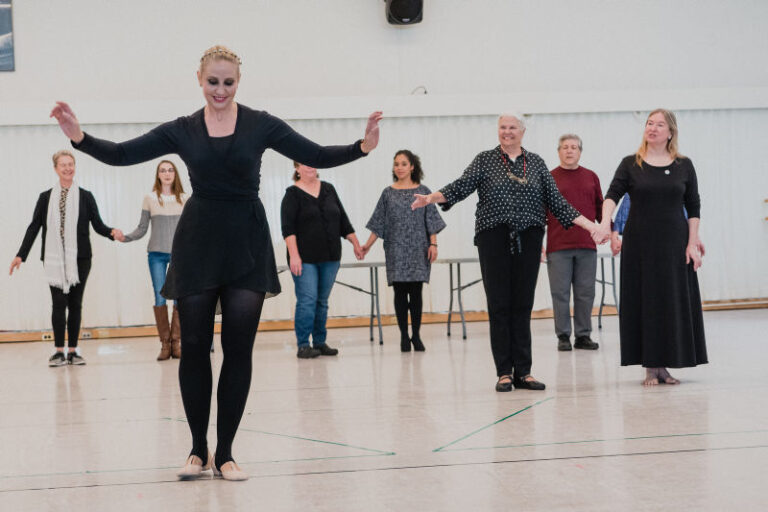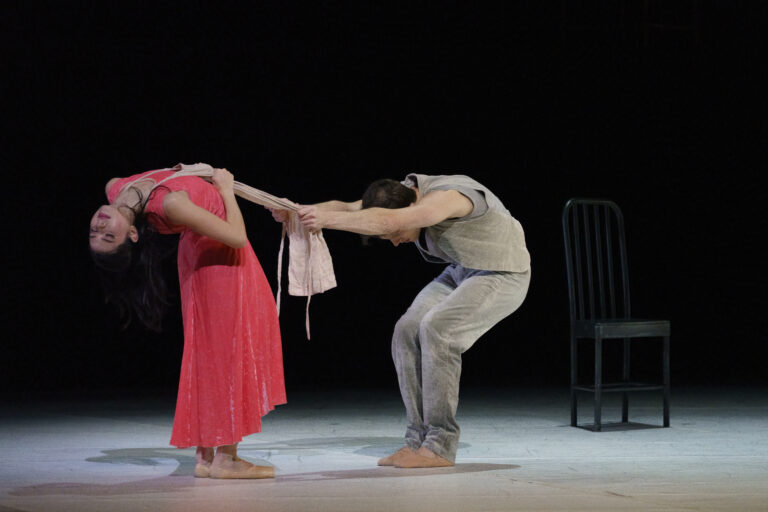
When Ballet Tucson artistic director Margaret Mullin was a junior in high school, she accidentally landed on a sickled foot while practicing a petit allégro combination. She tore four ligaments in her ankle and had to spend the majority of the next year healing. Although Mullin recovered and went on to a full and robust career, the early brush with injury provided her with an important perspective on dancer health and safety that she hopes to impart on her students and the dancers at Ballet Tucson.
“Something I’ve talked to dancers a lot about throughout my teaching career and directorship is how much more range you have on the outside of your ankle and how important it is to develop that strength,” she says.

Depending on the styles of dance you teach, you may ask your dancers to wing and/or sickle their feet. Although these positions might seem small, they are actually somewhat advanced, and should be taught with an aesthetic approach that balances safety, injury prevention, and technique.

Strength and Technique First
When teaching your students to wing and sickle, it’s important to build from a strong technical foundation. “If you’re trying to teach a child that is new to pointe shoes or doesn’t have a ton of ankle stability, then you’ve got it backwards,” says Dr. Tania Burinskas, a podiatrist and former dancer based in Maryland. “You need to have a really strong strength foundation. As far as that outside and inside motion, that is a purely secondary aesthetic that should only come after you really have the vertical flexibility and the strength to have a supported foot.”


Burinskas and her husband and professional partner, Justin Lewis, a foot and ankle surgeon, emphasize the impact of simple exercises, like calf raises at the barre and balances in relevé. Incorporating these exercises into your lessons will help dancers develop the strength necessary to wing and sickle.
Additionally, students might also benefit from a simple TheraBand series focused on ankle strength. Incorporate these exercises into your warm-up in class and encourage dancers to practice them on their own time, as well.
It may also be helpful to give your students a short anatomy lesson explaining the basics, such as the fact that the ligament supporting the inner ankle is much stronger than the three ligaments that support the outside of the ankle. “On the outside, those areas are more prone to damage, and [the injury is] more catastrophic for a dancer than the deltoid ligament, which is pretty strong,” Lewis explains.
Offer Individualized Attention
Kelly Ashton Todd, a New York City–based choreographer who utilizes both winged and sickled feet in her work, recommends working with students individually when incorporating wings and sickles. Because each student is likely to have anatomical differences—and might not have the same capacity when it comes to achieving these positions—a little one-on-one time will go a long way.
“You have to work so closely with each individual, because the anatomical structure of everyone’s foot is going to be very different,” she explains.
Avoid putting students in a position where they feel like they have to force their wing or sickle. Just like with forcing turnout, pursuing extreme positions can be a recipe for pain and injury. While teaching, be sure to ask dancers how the positions feel and encourage them to speak up if there is any pain or discomfort.

Incorporate Visualization Tools
While teaching wings and sickles, it might also be helpful to incorporate visualization tools into your lesson. Mullin recalls an image her former coach Stephanie Saland used to explain the energy of winging the foot: “She gave me the visualization of a barbershop pole that initiated all the way from the back side of my leg, my glute, to rotate my leg. [She encouraged me to] think about a spiral that occurred all the way down my leg, all the way down through my calf, rotating my ankle and heel forward.”
Mullin says this image helped her to both recognize the way a winged foot is tied to the musculature of the body and see the position as one that is active, as opposed to “passively cranking her ankle forward.”
Todd also remembers visualization being a vital aspect of her understanding of winged and sickled feet. She says she learned to imagine the position of the foot as an extension of the energy flowing through the entire leg.
“Growing up, I was really someone who crunched my feet a lot to try to force a point, because I have very low arches,” she says. “Instead, [I now] honor the shape of my feet and [recognize] the energy that extends beyond the feet. The energy keeps going—it doesn’t stop at the toes—and so the shape keeps going.”
Watch Mullin’s video tutorial below.





